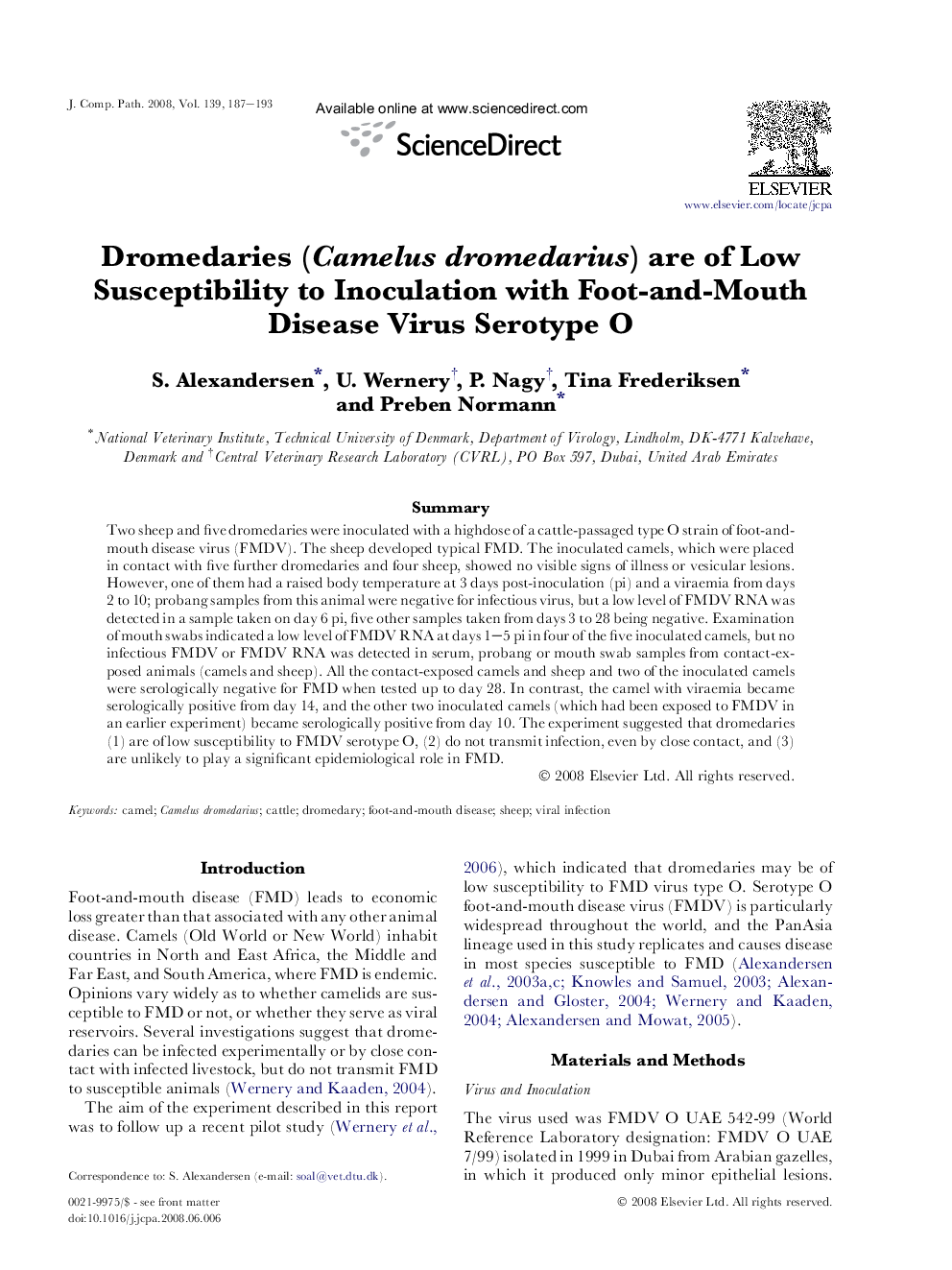| Article ID | Journal | Published Year | Pages | File Type |
|---|---|---|---|---|
| 2438556 | Journal of Comparative Pathology | 2008 | 7 Pages |
SummaryTwo sheep and five dromedaries were inoculated with a highdose of a cattle-passaged type O strain of foot-and-mouth disease virus (FMDV). The sheep developed typical FMD. The inoculated camels, which were placed in contact with five further dromedaries and four sheep, showed no visible signs of illness or vesicular lesions. However, one of them had a raised body temperature at 3 days post-inoculation (pi) and a viraemia from days 2 to 10; probang samples from this animal were negative for infectious virus, but a low level of FMDV RNA was detected in a sample taken on day 6 pi, five other samples taken from days 3 to 28 being negative. Examination of mouth swabs indicated a low level of FMDV RNA at days 1–5 pi in four of the five inoculated camels, but no infectious FMDV or FMDV RNA was detected in serum, probang or mouth swab samples from contact-exposed animals (camels and sheep). All the contact-exposed camels and sheep and two of the inoculated camels were serologically negative for FMD when tested up to day 28. In contrast, the camel with viraemia became serologically positive from day 14, and the other two inoculated camels (which had been exposed to FMDV in an earlier experiment) became serologically positive from day 10. The experiment suggested that dromedaries (1) are of low susceptibility to FMDV serotype O, (2) do not transmit infection, even by close contact, and (3) are unlikely to play a significant epidemiological role in FMD.
